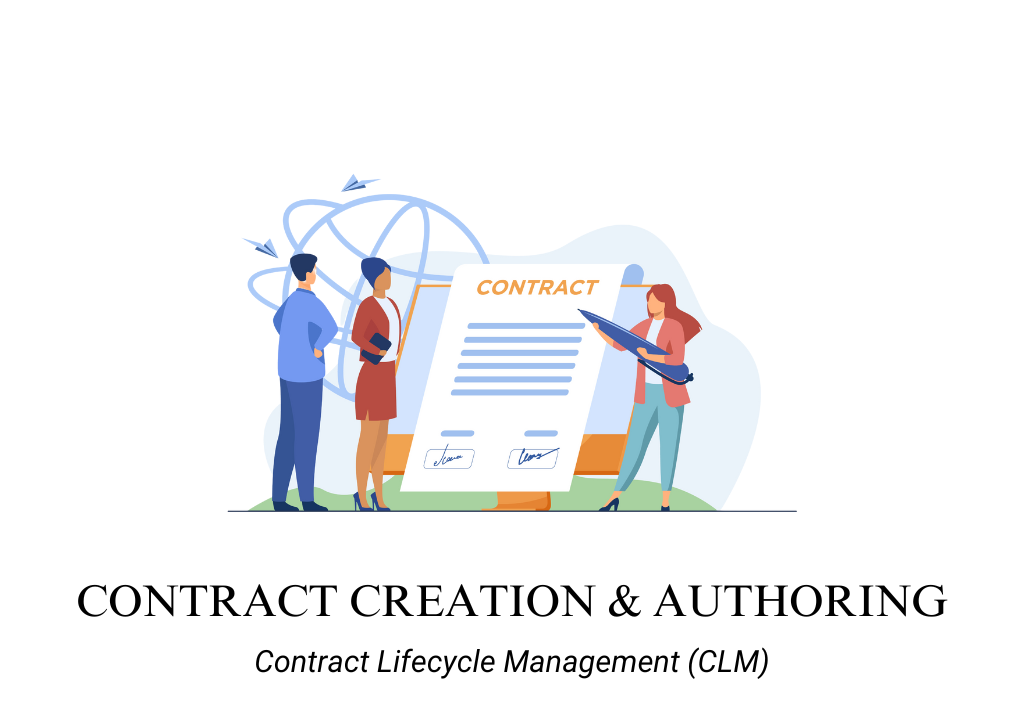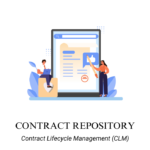Introduction
Contract Creation and Authoring is a critical functionality within Contract Lifecycle Management (CLM) tools, designed to streamline the development, customization, and management of contracts and legal documents. This functionality is essential for organizations that need to create a variety of contracts efficiently, ensuring they are consistent, legally compliant, and aligned with business objectives.
By using a CLM tool for contract creation and authoring, organizations can standardize their contract processes, reduce errors, and maintain control over contract content throughout its lifecycle. This functionality not only accelerates the contract drafting process but also helps in maintaining a repository of templates and standardized clauses that ensure compliance with legal standards and corporate policies.
Features of Contract Creation and Authoring
Contract Authoring
Definition: Contract authoring is the process of drafting and creating contracts that outline the terms and conditions of agreements between parties. This feature in a CLM tool allows users to draft contracts from scratch or modify existing templates to suit specific needs.
Purpose: The purpose of contract authoring is to facilitate the creation of precise and legally sound contracts that meet the specific needs of an organization. A CLM tool enables users to author contracts quickly and accurately by providing pre-defined clauses, templates, and customizable fields.
Use Case: A law firm uses the contract authoring feature in its CLM tool to draft client agreements. The tool allows the legal team to create contracts efficiently, using pre-approved language that reduces the need for extensive reviews and ensures consistency across all contracts.
Benefits:
- Speeds up the contract creation process by providing pre-defined templates and clauses.
- Ensures legal compliance and reduces risk by using standardized language.
- Facilitates collaboration among multiple stakeholders during the contract drafting process.
- Improves accuracy by minimizing manual errors and ensuring consistent formatting
Text Editor
Definition: A text editor is an integrated feature within a CLM tool that provides a user-friendly interface for drafting and editing contract text. This editor supports rich text formatting and allows users to make changes directly within the contract document.
Purpose: The purpose of the text editor is to offer a flexible and intuitive platform for users to draft, edit, and format contracts. It enables users to customize contract language easily and ensure that all necessary elements are included in the final document.
Use Case: A procurement manager uses the text editor feature in the CLM tool to modify a supplier contract, adding specific terms related to delivery schedules and penalties for late shipments. The editor’s formatting options ensure the contract is clear and professional.
Benefits:
- Provides a user-friendly interface for drafting and editing contracts.
- Supports rich text formatting, allowing for professional presentation of contract documents.
- Enables real-time editing and collaboration, improving efficiency in the contract creation process.
- Reduces reliance on external software by integrating all necessary editing tools within the CLM platform.
Contract Templatization
Definition: Contract templatization refers to the creation and use of standardized contract templates that can be reused for different agreements. This feature within a CLM tool allows organizations to build a library of templates that can be easily customized for various needs.
Purpose: The purpose of contract templatization is to streamline the contract creation process by providing ready-made templates that include standard clauses and formatting. This helps organizations save time, reduce errors, and ensure compliance with legal and corporate standards.
Use Case: A real estate company uses the contract templatization feature in its CLM tool to create lease agreements. By using standardized templates, the company ensures all agreements include the necessary clauses for compliance and risk management while allowing customization for specific properties.
Benefits:
- Reduces the time required to create contracts by using pre-approved templates.
- Ensures consistency across all contracts, enhancing compliance and reducing risk.
- Allows for quick customization of templates to suit specific business needs.
- Simplifies the contract drafting process, especially for frequently used agreement types
Format Customization
Definition: Format customization is a feature that allows users to modify the appearance and structure of contracts to meet specific organizational or client requirements. This includes adjusting fonts, layouts, headers, footers, and other document elements.
Purpose: The purpose of format customization is to provide flexibility in how contracts are presented, ensuring they meet branding guidelines, client preferences, or regulatory requirements. A CLM tool offers various formatting options to enhance the clarity and professionalism of contract documents.
Use Case: A legal service provider uses the format customization feature in its CLM tool to tailor client contracts with branding elements and client identity elements. This not only aligns the contracts with the agency’s brand but also enhances client satisfaction by delivering professional-looking documents.
Benefits:
- Enhances the professionalism of contracts by allowing for tailored formatting and branding.
- Ensures documents are compliant with internal and external formatting standards.
- Improves readability and clarity of contract documents through customized layouts.
- Provides flexibility to meet diverse client or organizational presentation preferences
Version Control
Definition: Version control is a feature that tracks and manages changes to contracts over time, ensuring that all edits are documented and previous versions are archived. In a CLM tool, version control allows users to review the history of contract changes, including who made edits and when.
Purpose: The purpose of version control is to maintain an accurate record of all changes made to a contract, preventing confusion over which version is the most current and ensuring that all modifications are properly documented. This is critical for legal compliance and accountability.
Use Case: A software company uses the version control feature in its CLM tool to track changes made to a licensing agreement during negotiations. The tool archives each version of the contract and records who made each change, allowing the company to easily reference past edits and ensure all parties are aligned on the final terms.
Benefits:
- Provides a clear audit trail of all changes made to a contract, enhancing transparency and accountability.
- Prevents errors and confusion by ensuring that only the most recent version of a contract is used.
- Facilitates collaborative editing by allowing multiple stakeholders to track changes and view the contract’s revision history.
- Supports compliance by documenting all changes and ensuring contracts meet legal and regulatory requirements.
Guide to find best Contract Lifecycle Management (CLM) for lawyers
CHECK OUT CLM TOOLS ON DIRECTORY OR CLICK HERE

